If you’ve ever seen a flash of royal blue and rust-red perched on a fence post, chances are you’ve met the Eastern Bluebird. I’ve been hoping to spot one in my neighborhood but I haven’t had any luck yet. These birds are not only a favorite among backyard birders—they’re a conservation success story with some quirky habits.
Males vs. Females: Spot the Difference
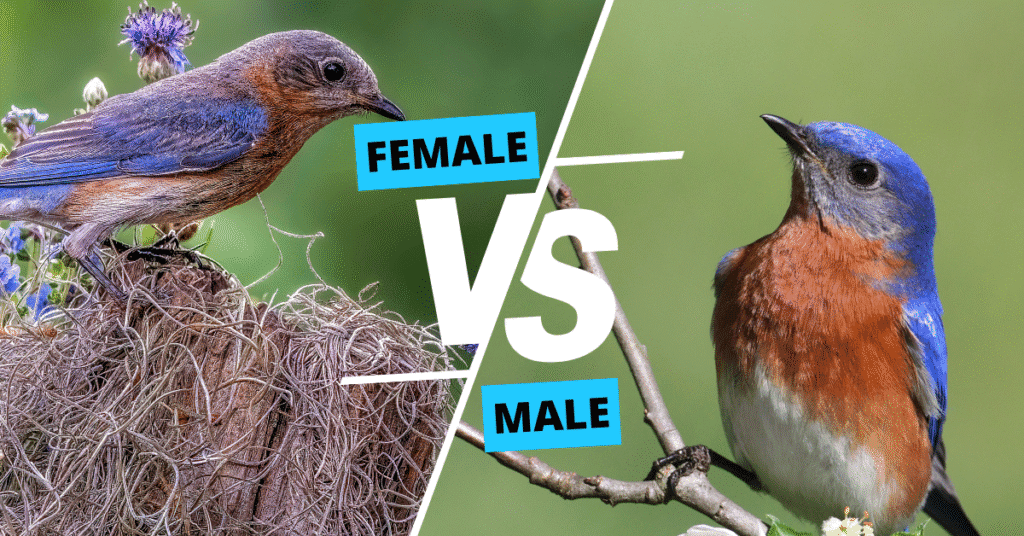
The male Eastern Bluebird is a walking color wheel: vivid blue back, rusty chest, and clean white belly. Females are more low-key, with grayish-blue wings and a more subdued orange wash on the chest. Still beautiful, just… a little more practical.
- Males: Brighter blue, more vibrant orange
- Females: Gray-blue wings, paler chest
- Both are about 6.5 inches long, with a musical “cheer-cheer-cheer” call
Bluebird Real Estate: Nest Boxes and Woodpecker Holes
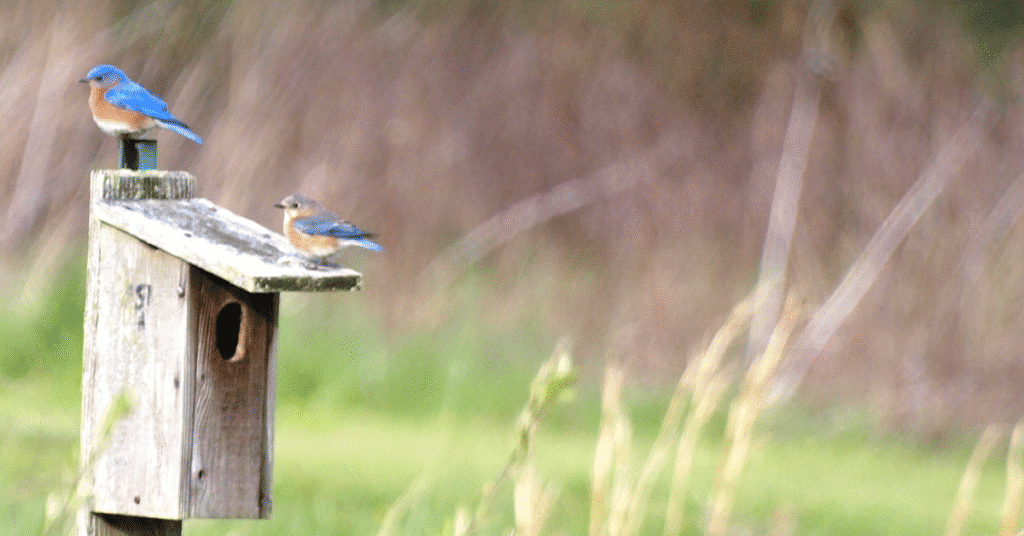
These birds are cavity nesters—which means they’re constantly on the lookout for abandoned Woodpecker holes or, more commonly today, nest boxes placed by humans. You’re in business if you’ve got a clean, well-placed birdhouse with a 1.5″ entrance hole and no perch.
Pro tip: They prefer open spaces with short grass and scattered trees. Think cow pasture vibes, but suburban.
Where They Live: A Wide Range
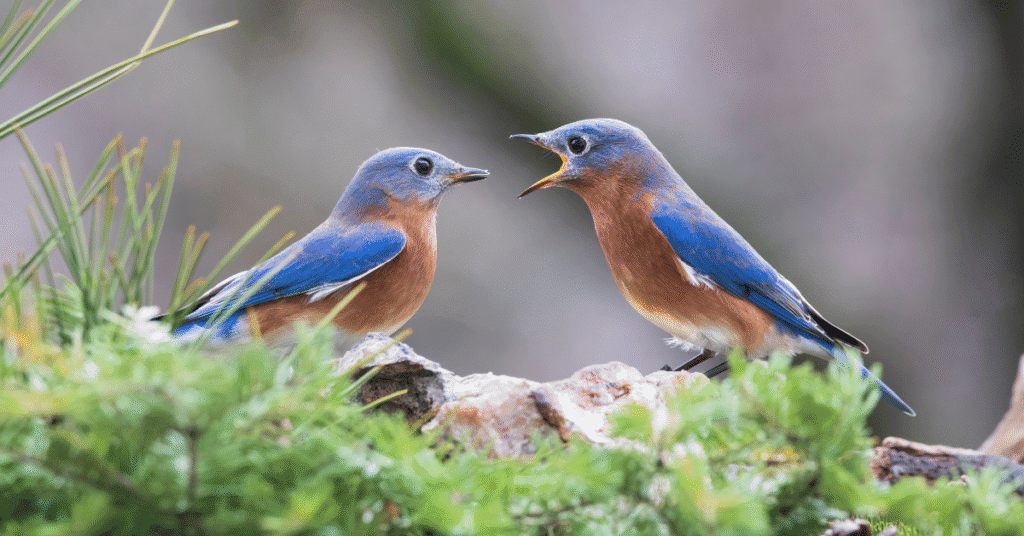
Eastern Bluebirds are found east of the Rockies in the U.S., from southern Canada down into Mexico, Nicaragua, and Honduras. They’re permanent residents in the south but migrate to northern parts of their range, especially where winters are harsh.
- U.S. states: All eastern and central states
- Countries: U.S., Canada, Mexico, Honduras, Nicaragua
Backyard Friends or Wild Wanderers?
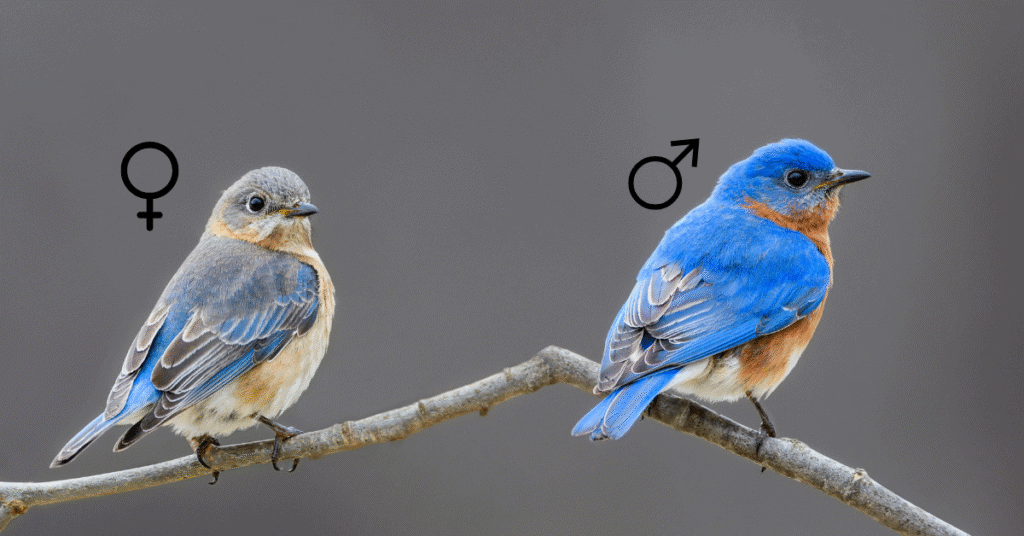
Yes, backyard birders absolutely see them—especially if you offer the proper setup. Bluebirds aren’t feeder-hoppers like chickadees, but they’ll stick around for mealworms, berries, and the occasional suet bite in winter.
What to Plant: Bluebird-Friendly Flora
If you’re looking to attract them naturally, plant dogwood, serviceberry, sumac, or elderberry—all produce their favorite berries. Insects are the main course during the warmer months, though.
- Summer diet: Grasshoppers, beetles, caterpillars, spiders
- Winter diet: Berries (especially dogwood, viburnum, pokeweed), dried fruits
Fun Fact You Might Not Know
Did you know bluebirds can have two or even three broods in a single season? And their babies fledge in just 17-18 days—faster than you can finish binge-watching that nature doc you started.
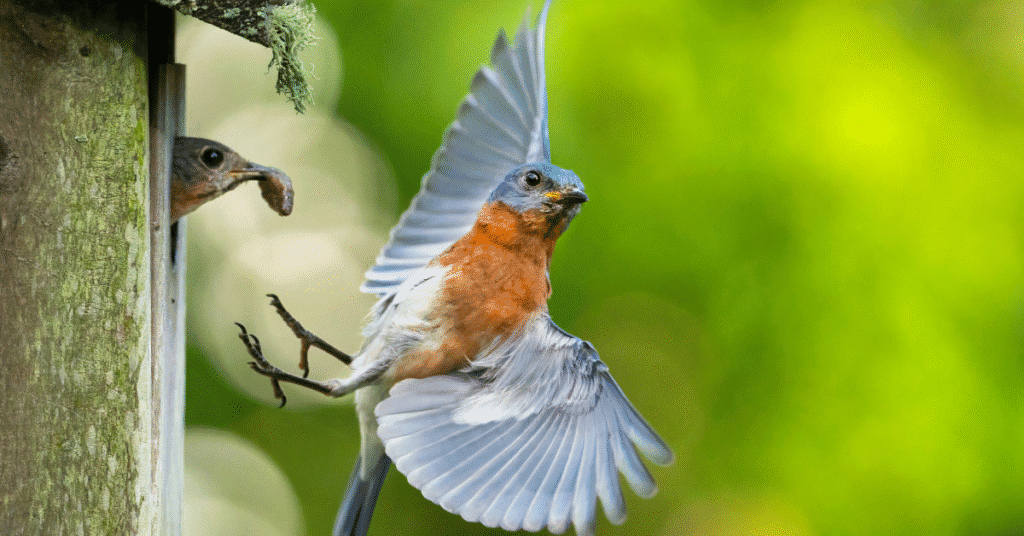
More Fun Facts: Eastern Bluebirds Exhibit Consistent Personalities
Recent research has uncovered that Eastern Bluebirds display consistent individual differences in behavior akin to human personalities. A study conducted by researchers Jennifer L. Burtka and Jennifer L. Grindstaff observed that these birds exhibit repeatable nest defense behaviors, indicating stable personality traits over time. Interestingly, while both male and female bluebirds showed consistent behaviors, males demonstrated more behavioral flexibility compared to females. This discovery highlights the complexity of avian behavior and suggests that personality traits can influence how these birds interact with their environment and respond to challenges.